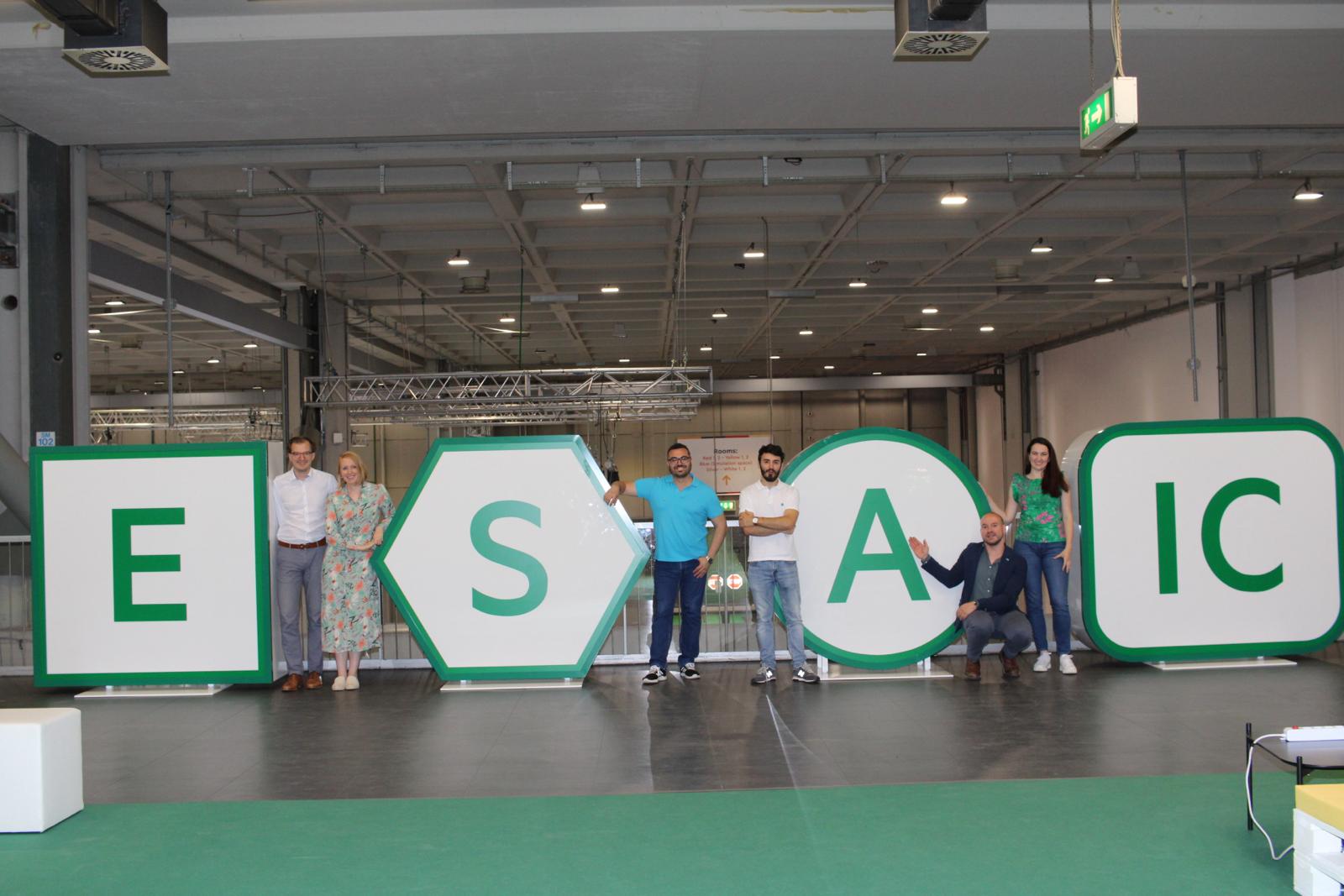ESAIC News
Analysis of COVID-19 data on numbers in intensive care from Italy: European Society of Anaesthesiology (ESAIC)
A new report on COVID-19 data to March 18 from Italy, prepared by an Italian expert for the European Society of Anaesthesiology (ESAIC), says that the rate of increase in the number of patients in intensive care with COVID-19 in Italy may have peaked in Lombardy, and may still be peaking in Italy as a whole. The report is by Davide Manca, Professor of Process Systems Engineering at Politecnico di Milano, Milan, Italy.
Professor Manca explains the number of patients in intensive care with COVID-19 (NICUC) starts with an exponential trend, with numbers doubling over 2 to 4-day intervals, with this explosion observed for a long period, approximately until day 16 to 18. After this, there are 3 to 4 days in which the maximum speed of increase is continued, known as the inflection point. The data in this report goes up to day 26 of the pandemic, Wednesday, March 18. Professor Manca says the data show that this inflection point was reached on day 19 in Lombardy, and day 22 in Italy. Patients that survive the infection are spending an average of 15 days in intensive care (ICU), and at least 10 days in each case.
The number of intensive care beds in Italy continues to change. Initially, there were 500 public intensive care (ICU) beds in Lombardy, and 140 private ICU beds. However, now there are more than 900. Other regions in central and Southern Italy are estimated to be 10 to 12 days behind the position in Lombardy, and these regions are scrambling to increase their capacity, for example by converting other wards to intensive care use.
“The difference between Lombardy and Italy was only due to the restrictive measures to movement and contacts among people adopted first in Lombardy and then all over Italy,” explains Professor Manca. “Every day counts. After the inflection point, the rate of increase slows although overall numbers still increase steadily. However, the rate of increase slows down progressively until it flattens, with no further increase in the rate of people entering intensive care. The best estimate of when this will occur in Italy on this data is between days 38 and 40, which is to say in the first few days of April.”
However, he adds: “This prediction is an extrapolation of the data and should be interpreted with caution, and will depend on how effective Italy’s quarantine measures are in these next two weeks. As various reports are showing, many people in Italy are not respecting the quarantine and social distancing rules.”
He has also prepared a list of observations from the data:
- Initially NICUC doubles in less than 3 days, then the doubling time of NICUC becomes longer but the improvement is quite slow (i.e. every day the doubling time gains few hours). After three-four weeks, the doubling time is conservatively 4-5 days.
- CPAP (continuous positive airway pressure) devices may delay respiratory failure, helping medical staff (also non-ICU experts) to avoid ICU admission when intubation is not feasible or available. CPAP devices are types of ventilator used to treat conditions such as obstructive sleep apnoea, and not usually used in ICU settings. However, while they are not the first choice of ventilator, they can be used in cases that are serious but not critical, and when intensive care beds are not available. Also, nurses with regular training can use these devices, ICU experts are not required.
- One critical point may become the oxygen pressure in distribution lines as every CPAP can use 40 L/min and because of the high number of patients using breathing devices.
- Wards used for other purposes can be modified and prepared for ICU purposes. This can be done in a matter of days or even a fraction of a day. It requires a great coordination among people with logistic capabilities. In Italy, hospitals have been completely overwhelmed in allocating new ICU beds. The most difficult problem is correctly allocating human resources and competences to manage the ICU equipment and critically ill patients.
- In case protective masks are running out, it is possible to reuse them after proper sterilisation (better than nothing but not recommended if it can be avoided).
- Private financial donations can help a lot in creating ICU beds in few days bypassing the bureaucracy and slow decisions of public bodies.
- ICU patients (either Covid-19 or non-Covid-19) can be moved to other hospitals either inside or outside of the region to free beds for other ICU covid-19 patients.
- There is generally a much higher proportion of male patients in ICU due to COVID-19 than female, although exact numbers vary between hospitals. Comorbidities play a significant role but not always. In one hospital, a high percentage of overweight and obese ICU patients was observed.
- As for other countries, a shortage of medical doctors and nurses may occur as some of them may become infected. All countries have the option recall retired medical doctors and nurses, and to hire graduated doctors who have not received the enabling license yet.
Professor Manca concludes: “If other countries want to have enough ICU beds to treat all the COVID-19 patients that are going to be arriving in their hospitals, they have to decrease the peak of the tsunami of cases that are coming. The most effective way to do this is to follow and enforce Italy’s very strict quarantine and social distancing measures, and make sure they are implemented.”
In a previous media release earlier this week, ESAIC President Professor Kai Zacharowski (Director of the Department of Anesthesia, Intensive Care Medicine and Pain Therapy, University Hospital Frankfurt, Germany) highlighted the shortage of intensive care beds across the whole of Europe, saying: “For the last decade across Europe we have been cutting down on hospital beds, including intensive care beds. And now we are realising that we don’t have enough. If we had arranged and distributed equipment at the right time, countries might have been able to avoid the situation in Italy. But now, there has been a rush to order equipment such as ventilators, which companies are struggling to provide due to interruption in the supply of parts from China.”
Prof Davide Manca, Professor of Process Systems Engineering, Politecnico di Milano, Milan, Italy. T) +39 328 5690430 E) davide.manca@polimi.it
Professor Kai Zacharowski (Director of the Department of Anesthesia, Intensive Care Medicine and Pain Therapy, University Hospital Frankfurt, Germany). Please e-mail to arrange an interview. E) Kai.Zacharowski@kgu.de
Alternative contact Tony Kirby of Tony Kirby PR. T) +44 7834 385827 E) tony@tonykirby.com
Notes to editors:
For the full report, click here
For supplementary material, click here
This report has been checked by two heads of anesthesiology and resuscitation of Lombardy hospitals (Besta Institute in Milan and Lodi Hospital). It was also analysed by an intensive care doctor of San Paolo Hospital in Milan. In addition, most of the supplemental material was prepared for a webinar given to almost 1,000 anesthesiologists and resuscitation doctors in the United Kingdom by the head of Lodi Hospital.
As of March 19, 2020 there have been 41,035 confirmed cases of COVID-19 infection and 3405 confirmed deaths – now the largest death toll of any country in the world.










